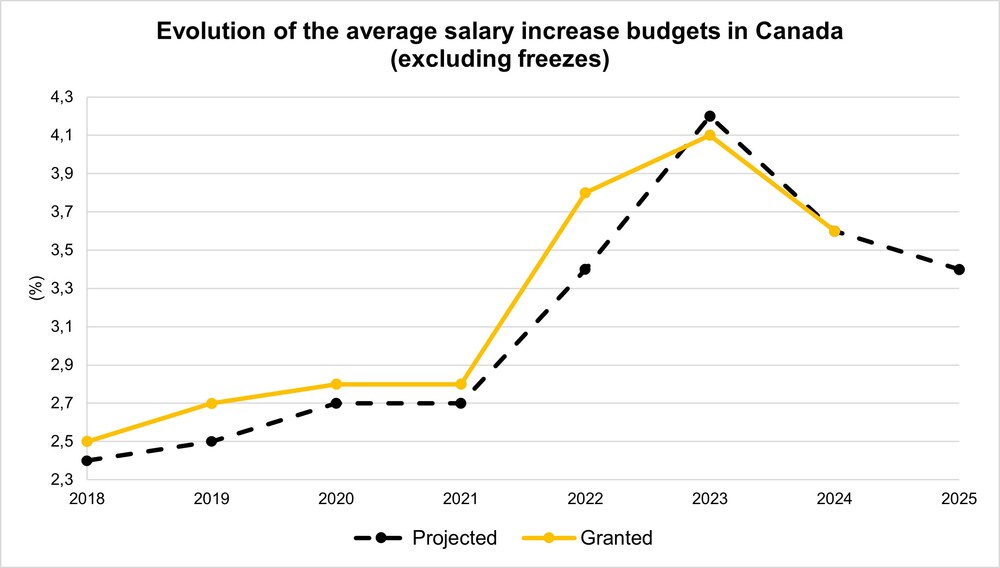Canadian employers are set to scale back salary increase budgets in 2025, with an average increase of 3.4% projected, according to a survey by Normandin Beaudry, a firm specializing in actuarial and total rewards consulting.
This marks a 0.2 percentage point decrease from the 3.6% average increase seen in 2024, as businesses gradually return to pre-pandemic compensation norms.
The 14th annual Salary Increase Survey, which gathered responses from more than 750 organizations across Canada, highlights a shift in compensation strategies amid stabilizing economic conditions.
“While economic pressures and the competition for talent remain challenging, we’re beginning to see a gradual return to pre-pandemic market norms as salary increase budgets reduce for a second year in a row,” said Darcy Clark, Senior Principal of Compensation at Normandin Beaudry.
Despite the decline in overall salary budgets, many organizations are still setting aside additional funds to address specific compensation challenges, including labour shortages and market adjustments. The survey revealed that 44% of employers plan to allocate an extra 1.0% on top of their general salary budget in 2025, slightly down from 50% in 2024. These additional funds are often used to retain employees in critical roles and to reward top performers.
Certain sectors are expecting above-average increases. The high-tech industry leads the pack with a forecasted 4.3% increase in 2025. Other sectors projecting higher-than-average increases include telecommunications (3.9%), professional services (3.7%), and construction (3.6%). Computer design, IT services, and AI, as well as energy, mining, and healthcare, are also among the sectors expecting significant increases, ranging from 3.5% to 3.6%.

Clark noted that while projected salary increases remain above 3%, businesses are becoming more cautious. “Organizations are considering affordability when defining their long-term plans. Several significant salary increase cycles may not be sustainable, and organizations remain cautious about increasing recurring payroll costs as they plan for the future.”





